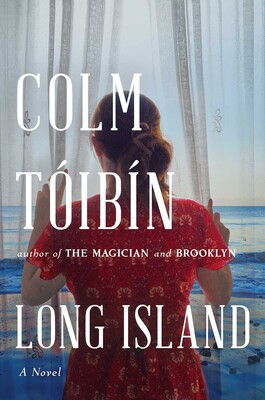Summary | Excerpt | Reading Guide | Reviews | Beyond the Book | Read-Alikes | Genres & Themes | Author Bio

Eilis Lacey Series #2
by Colm ToibinThis article relates to Long Island
 In Colm Tóibín's novel Long Island, one of the main characters owns a chip shop in Enniscorthy, Ireland – a carryout restaurant that sells fish and chips (french fries in the United States). The dish is a staple of the British Isles, and hundreds of chip shops (aka "chippies") can be found in the Republic of Ireland, where the majority of the book is set. Despite its ubiquity, however, neither fried fish nor chips originate from that part of the world.
In Colm Tóibín's novel Long Island, one of the main characters owns a chip shop in Enniscorthy, Ireland – a carryout restaurant that sells fish and chips (french fries in the United States). The dish is a staple of the British Isles, and hundreds of chip shops (aka "chippies") can be found in the Republic of Ireland, where the majority of the book is set. Despite its ubiquity, however, neither fried fish nor chips originate from that part of the world.
In the 16th century, the governments of Spain and Portugal went to great lengths to stamp out any perceived anti-Roman Catholic sentiment. Their targets included not only those professing the Protestant faith, but anyone who came from a Jewish background as well. Many in both groups claimed to convert to Catholicism to avoid arrest, but some of these "conversos" continued their religious practices in secret.
Part of Orthodox Jewish teaching was (and still is) that no work could be done on the Sabbath (Friday at sundown until Saturday at sundown), a prohibition that includes cooking. One of the common meals that could be prepared in advance was "pescado frito" – fried fish – usually cod or haddock dredged in flour or matzo meal and then fried in oil. The batter was thought to preserve the fish, so the dish could be prepared during the day on Friday and eaten cold throughout the Sabbath.
As persecution of the area's non-Catholic population intensified, many Jewish residents fled to England, taking their recipes for pescado frito with them. To make a living some of the immigrants began selling the fish on street corners, sporting trays that were hung from their necks by a cord. The dish was instantly popular. The first recipes started appearing in cookbooks in the 1780s, and Thomas Jefferson referenced enjoying fish "in the Jewish fashion" on one of his visits to England around that same time period.
The origin of the humble chip is murkier – no one's really sure who first started cooking sliced potatoes in oil (although both France and Belgium claim the victory). Interestingly, many believe the first time the word "chips" appeared in print was in Charles Dickens' classic A Tale of Two Cities (1859). It's also thought that Joseph Malin, an Ashkenazi Jew who emigrated from Europe, opened the first fish and chip shop in England in London's East End in the 1860s.
Fish and chips made it to Ireland a few years later, in the 1880s. Giuseppe Cervi, an Italian bound for America, decided to get off the ship at Cobh. He traveled to Dublin, where he worked as a laborer. Once he'd earned enough money he bought a hand cart and a coal-fired cooker and began to sell fish and chips outside Dublin pubs. He eventually opened a shop on Great Brunswick Street (now Pearse Street) with his wife, Palma. Tradition has it that Palma would ask customers if they wanted "Uno di questo, uno di quello?" (meaning "one of this and one of the other"). To this day, Dubliners often order fish and chips by asking for a "one and one."
At the height of their popularity in the mid-1920s, there were over 35,000 "chippies" in the UK and several hundred more in Ireland. The number of shops has been in decline in recent years, though, due to increased costs and supply chain issues. Recent trends suggest as many as half of the remaining 10,000 shops will need to shut down over the next few years.
Fish and chips shop in Kent, courtesy of Bodoklecksel CC BY-SA 3.0
Filed under Cultural Curiosities
![]() This article relates to Long Island.
It first ran in the May 15, 2024
issue of BookBrowse Recommends.
This article relates to Long Island.
It first ran in the May 15, 2024
issue of BookBrowse Recommends.




I like a thin book because it will steady a table...
Click Here to find out who said this, as well as discovering other famous literary quotes!
Your guide toexceptional books
BookBrowse seeks out and recommends the best in contemporary fiction and nonfiction—books that not only engage and entertain but also deepen our understanding of ourselves and the world around us.